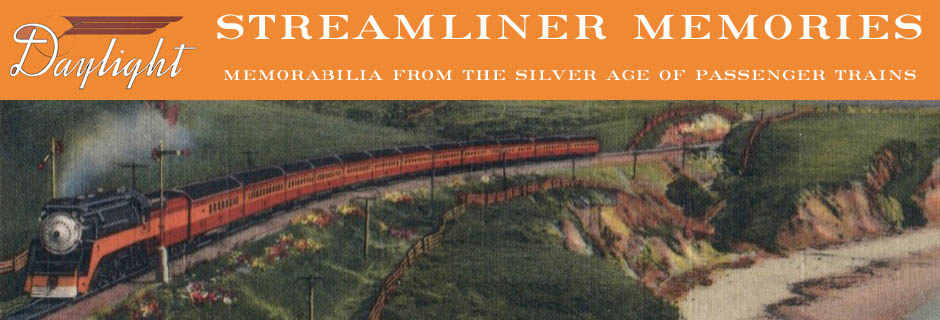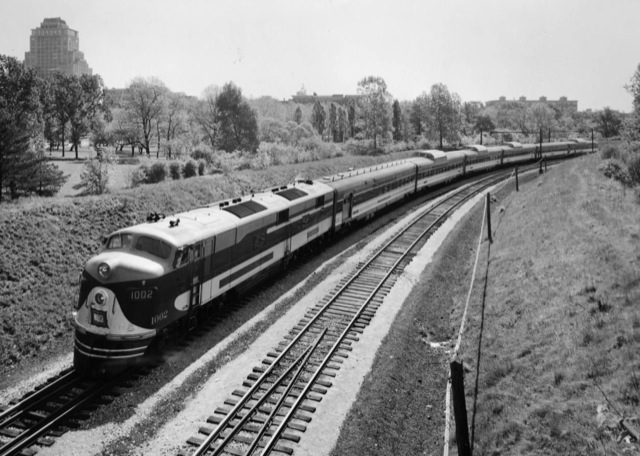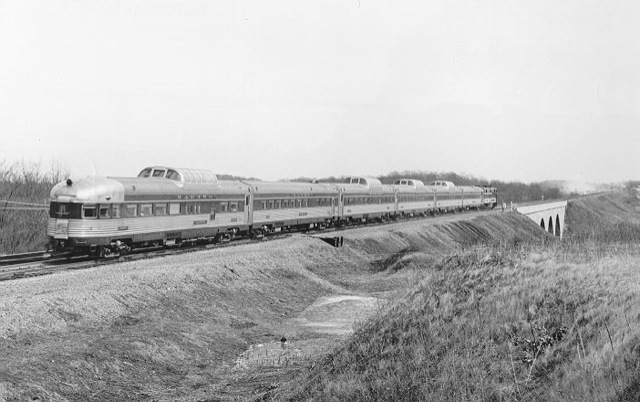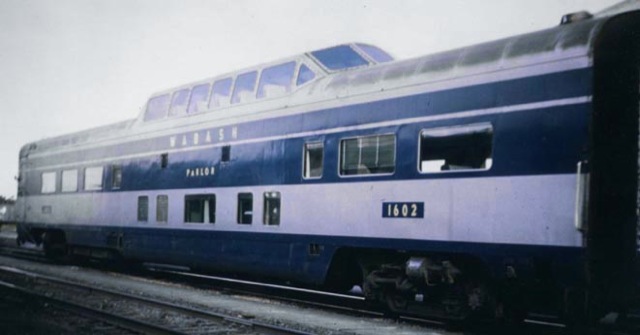After the Twin Cities Zephyr, the Colorado Eagle, the California Zephyr, the Columbian, and Royal Gorge, the next train to receive dome cars was the Wabash Blue Bird connecting Chicago and St. Louis. The railroad introduced the streamlined train in this corridor on February 26, 1950.
The Wabash Blue Bird near St. Louis in 1958. Click image for a larger view.
Like the Chicago-Twin Cities route, the Chicago-St. Louis corridor was hotly competitive, with the Wabash facing the Illinois Central and the Gulf, Mobile & Ohio (which took over the Alton Route in 1947). The dome cars gave the Wabash, which had been a minor player in this corridor, a competitive advantage for many years.
Rear view of the Blue Bird in 1950. Click image for a larger view.
The train’s four dome cars were built by Budd and included three dome coaches and a dome-observation parlor car. The railroad went to Pullman for the baggage-lunch counter car and diner, while the train was pulled by a General Motors E8 locomotive.
Only one train set was required for the service, which was scheduled to go from St. Louis to Chicago in the morning and returning in the evening. The train took a little more than 5 hours for an average speed of 53 to 55 mph. A heavyweight or partly heavyweight train called the Banner Blue provided the opposite service: Chicago-St. Louis in the morning and return in the evening.
Pullman-built dome car for the Blue Bird. Click image for a larger view.
Demand for the train proved so great that in 1952 the Wabash bought an additional dome car from Pullman to use as an extra parlor car. This car had flat panes of glass in the dome–Pullman never built a short dome with curved glass–and lacked the corrugated sides that had been bolted on to the 1950 cars to match the Budd corrugated stainless steel bodies. The domes were seven inches taller than the Baltimore & Ohio Pullman domes, so the windows were larger. When Amtrak took over in 1971, it bought the Budd domes but not the Pullman dome, so the Southern Railway–which didn’t join Amtrak until 1979–purchased this car and used it for many years on the Crescent.
Along with the Baltimore & Ohio and Missouri Pacific, the Wabash painted some of its streamlined trains blue. When Norfolk and Southern took over the Wabash in 1964, it kept running the Blue Bird in Wabash colors (though relettered “Norfolk and Western”).
This is the lunch counter (in the background) lounge portion of the baggage-lounge car. Click to download a PDF of this postcard.




The 1950 Blue Bird was an all Budd built train. In 1952, a Budd dome coach was swapped with an ACF built coach from the City of Kansas City and a dome parlor car (1602) from Pullman was added to the consist. A heavy weight parlor was used at times prior to receiving the Pullman dome parlor. That was the standard consist until 1960, when there was a major shift in passenger equipment. Normal power in the 50’s was a single E-8. However, it was powered by E-7, PA-1, Trainmaster, and at least one time by a P class Hudson!